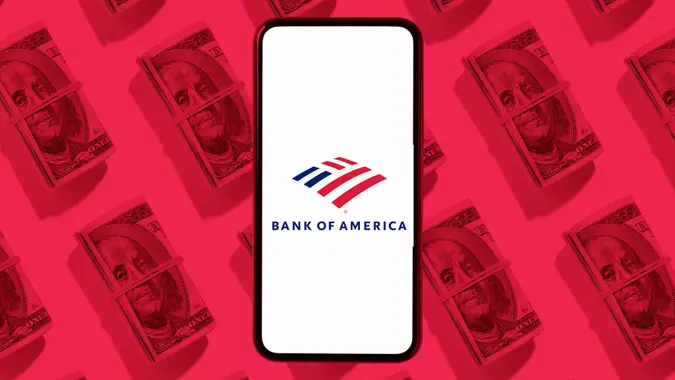

GOBankingRates' editorial team is committed to bringing you unbiased reviews and information. We use data-driven methodologies to evaluate financial products and services - our reviews and ratings are not influenced by advertisers. You can read more about our editorial guidelines and our products and services review methodology.
20 Years
Helping You Live Richer
Reviewed
by Experts
Trusted by
Millions of Readers
Direct deposit is a convenient way to receive money from your employer or the government. If you’re a customer with Bank of America, Member FDIC, you have another reason to consider setting up a direct deposit: It’s a way to avoid monthly maintenance fees on select accounts. Keep reading to learn more about how to sign up for Bank of America direct deposit and how it works.
Direct deposit is simply the electronic transfer of funds straight into your Bank of America bank account from the entity that is paying you, which might be your employer or a government agency. Direct deposit is faster and less expensive than issuing paper checks.
There are multiple ways to set up a Bank of America direct deposit. No matter which method you choose, you need to provide information about yourself and your account.
You may be able to set up direct deposit with your employer’s payroll system online. If not, follow these steps to set up a direct deposit from your employer:
For benefits being paid by the federal government, such as Social Security and Veterans Affairs payments, you have three options. The first is to complete the process online:
You also can call the U.S. Treasury or schedule an appointment at a local Bank of America branch during regular business hours.
If you are a Bank of America customer, it makes sense to set up a direct deposit for recurring payments. Not only is it a convenient way to receive money, but it can also bring you significant savings. For example, Bank of America Advantage Plus Banking® checking account holders can waive the $12 monthly maintenance fee when they have at least one qualifying direct deposit of $250 or more made to their accounts. That’s a savings of $144 per year.
Get the latest news on investing, money, and more with our free newsletter.
By subscribing, you agree to our Terms of Use and Privacy Policy. Unsubscribe at any time.

You're now subscribed to our newsletter. Check your inbox for more details.

This article has been updated with additional reporting since its original publication.
Information is accurate as of Feb. 21, 2023.
Editorial Note: This content is not provided by any entity covered in this article. Any opinions, analyses, reviews, ratings or recommendations expressed in this article are those of the author alone and have not been reviewed, approved or otherwise endorsed by any entity named in this article.